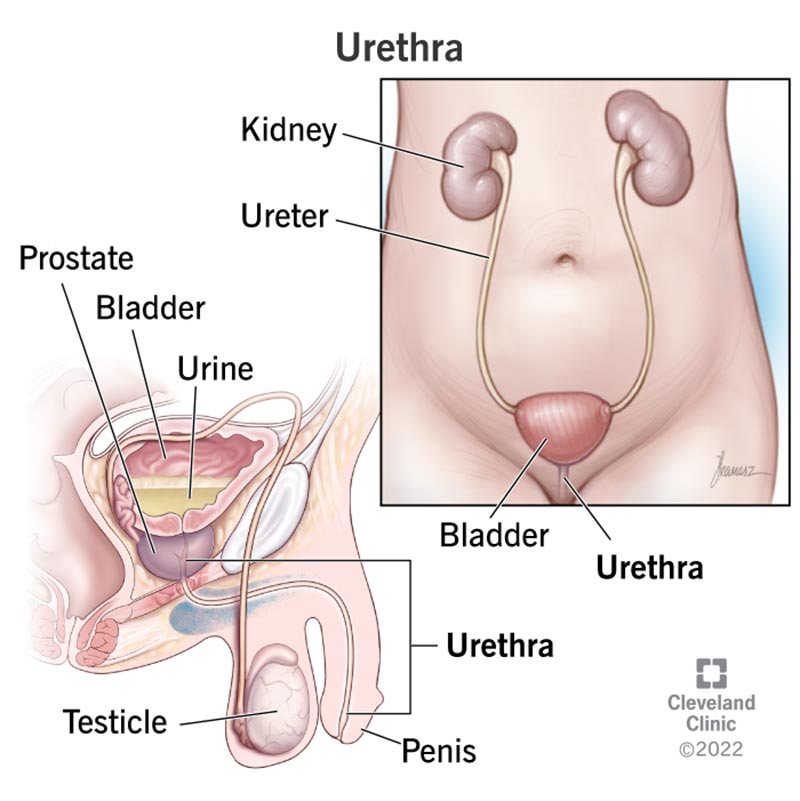Your urethra is the tube that lets urine, a waste product, leave your body. Your urethra is part of your urinary system, which also includes your kidneys, bladder and ureters. This system cleans your blood, sending waste out of your body in pee. Your urethra can become infected, injured or scarred.
Advertisement
Cleveland Clinic is a non-profit academic medical center. Advertising on our site helps support our mission. We do not endorse non-Cleveland Clinic products or services. Policy

The urethra is the tube that lets urine (pee) leave your bladder and your body. Everyone has a urethra. Only pee comes out of a female urethra. Semen comes out of the male urethra during sex.
Advertisement
Cleveland Clinic is a non-profit academic medical center. Advertising on our site helps support our mission. We do not endorse non-Cleveland Clinic products or services. Policy
The urethra is part of your urinary system. This system is made up of your kidneys, bladder, ureters and urethra. If you’re male, it also includes your prostate.
Your kidneys clean your blood and produce urine, a waste product. From your two kidneys, two ureters move the urine to the bladder. It stays in your bladder until you pee.
Your urethra provides a way for urine to come out of your body. Pee exits your body through a hole at the end of your urethra. The hole is called the urethral meatus. (The term “meatus” means an opening from the inside to the outside.)
Your urethra is located in your body’s pelvic region. In males, the urethra passes through your prostate and into your penis. In females, the urethra is much shorter. It starts at your bladder and opens in front of your vagina.
If you’re female, your urethra is about 1.5 inches long. This is about 3 to 4 centimeters. If you’re male, your urethra is about 7 to 8 inches long. This is about 20 centimeters.
There are three parts to the male urethra:
Advertisement
The walls of the tube are thin. They’re made up of:
The urethra has two different types of sphincters. These are muscles that act as valves that open or close. Your internal sphincter is at the point where your urethra leaves your bladder. Your external sphincter is in the pelvic floor. These muscles work with your bladder to get pee out of your body.
Conditions that can affect your urethra include:
Issues with the urethra are more common in males.
A damaged urethra can lead to problems like:
Here are some common signs or symptoms you might have with a medical issue involving your urethra:
If your healthcare provider suspects you have a disorder of the urethra, they may order these types of tests:
One of the most important things you can do is drink enough fluids. Water is best. If your pee is pale yellow, you’re drinking enough.
Advertisement
Other tips include:
Review your medicines, foods and choice of birth control with your healthcare provider if you have problems with your urinary tract. Some medications and foods can affect your urinary system.
Using the bathroom is a part of daily life. Your urethra is the hollow tube that allows urine, a waste product, to leave your body. Drinking the suggested amount of water every day can help keep your urethra healthy. If you have pain while peeing or see blood in your urine, contact your healthcare provider.
Advertisement
Cleveland Clinic’s primary care providers offer lifelong medical care. From sinus infections and high blood pressure to preventive screening, we’re here for you.

Last reviewed on 07/30/2025.
Learn more about the Health Library and our editorial process.